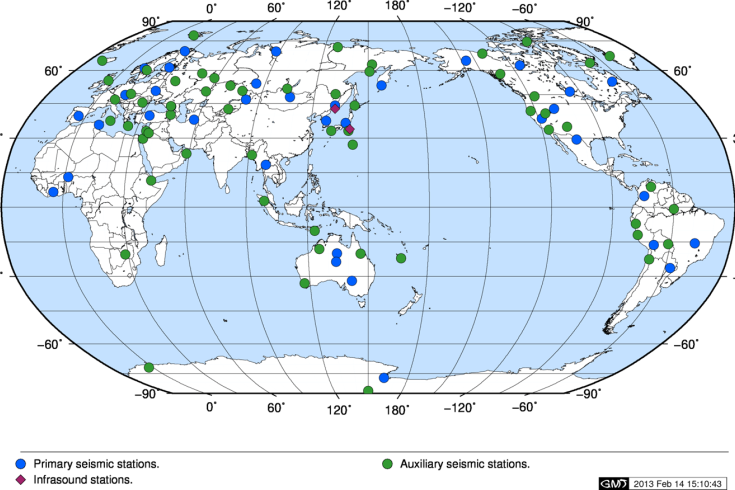Update on CTBTO findings related to the announced nuclear test by North Korea

By 14 February 2013, 96 International Monitoring Stations have sent data related to the announced North Korean test (click to enlarge)
In-depth analysis of data sent to Member States the following day
International denouncement of DPRK’s declared nuclear test
Constantly monitoring the globe for evidence of a nuclear explosion
Increased number of stations in operation allows for greater detection accuracy

Comparison of the location estimates of the 2006 (green), 2009 (violet), and 2013 (red) announced nuclear tests by North Korea (click to enlarge)
Addition - 12 March 2013
15 Feb 2013
